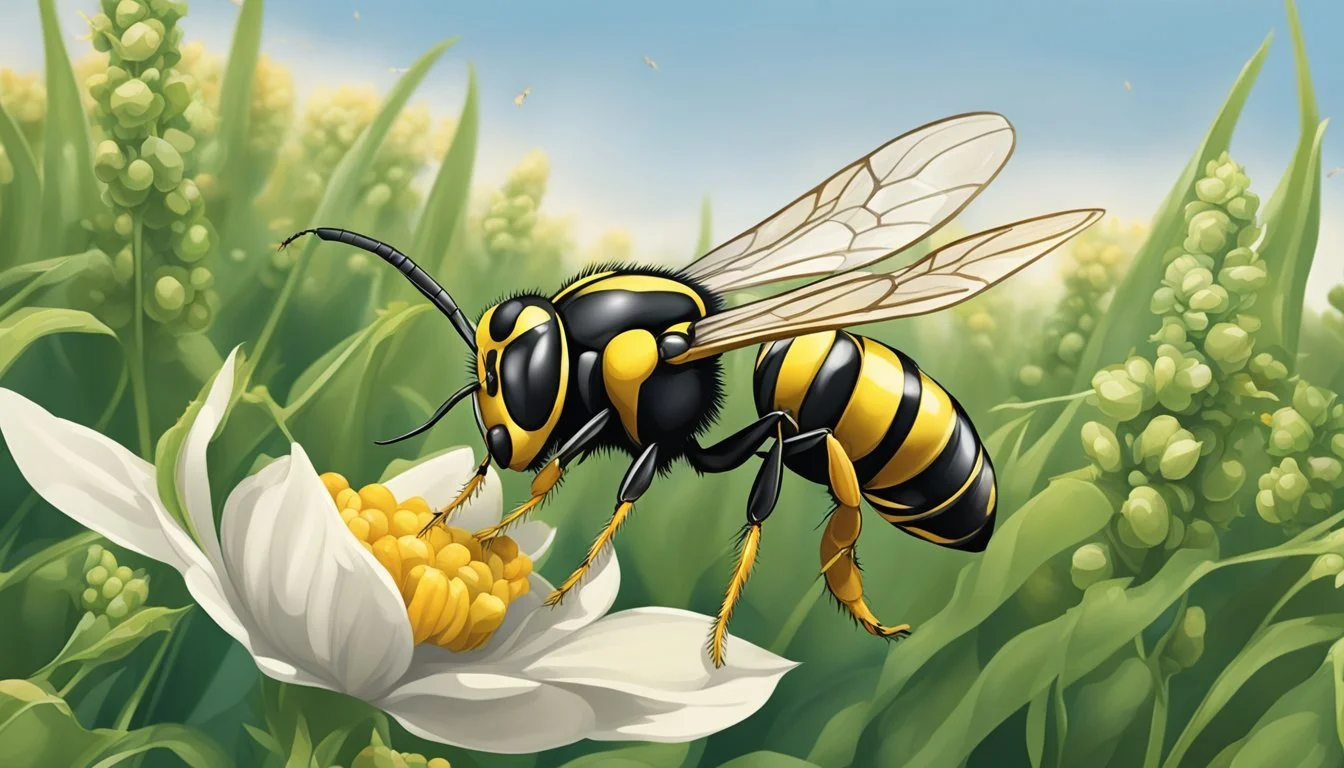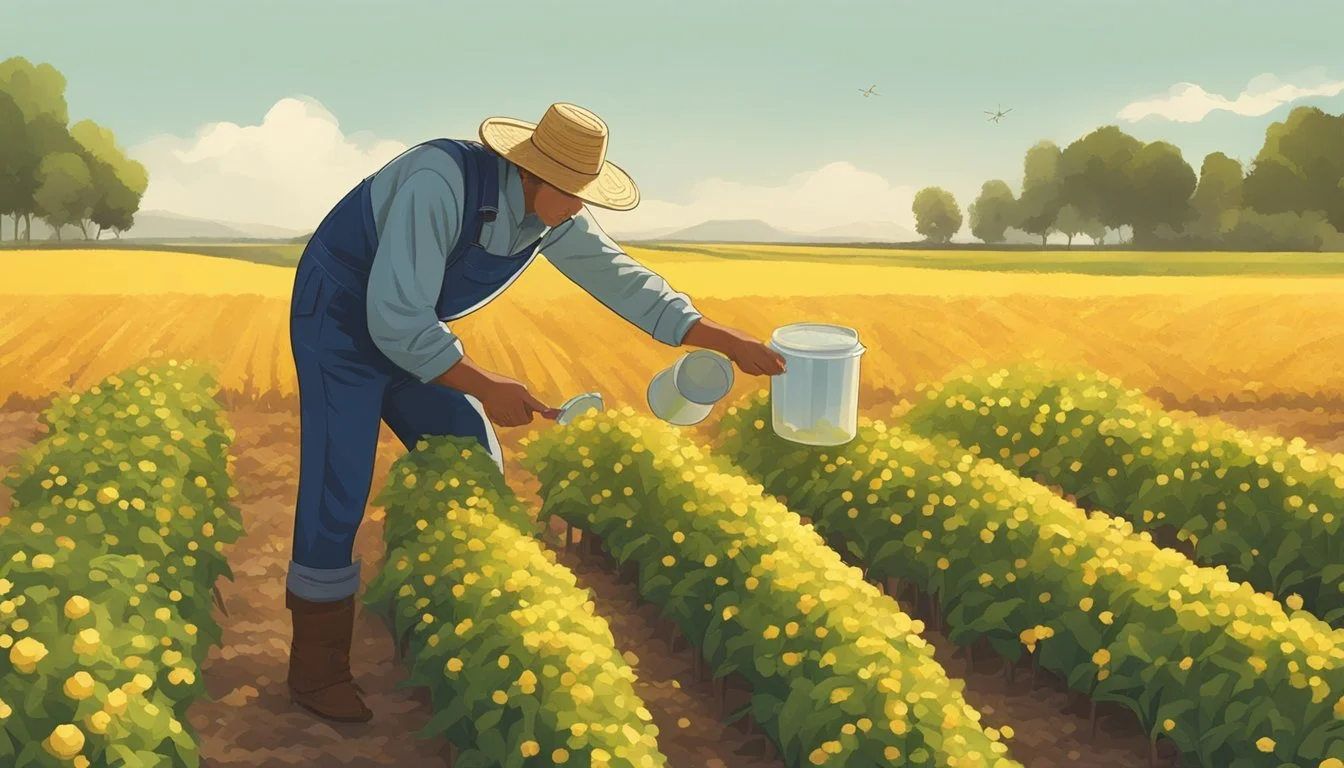Protecting Crops from Wasps
Effective Strategies for Farmers
Protecting crops from the damaging effects of wasps is a crucial aspect of modern agriculture. While wasps play an important role in ecosystems as pollinators and as natural pest control agents preying on other insects, they can also become pests themselves. When wasps infest crops, they can cause significant damage, not just through their stinging behavior but also by affecting the quality and yield of the produce. Farmers and gardeners must employ effective strategies to safeguard their crops from these insects, balancing the need for protection with the benefits wasps offer.
Developing a comprehensive approach to managing wasp populations involves understanding their behavior, life cycle, and the attractions that crops present to them. Various methods can be employed to deter or manage wasps, including physical barriers, traps, and the application of insecticides with precision to minimize negative impacts on the environment and beneficial organisms. Additionally, innovating non-lethal deterrents such as employing the use of repellant odors that mimic the presence of their natural predators can be a sustainable alternative to traditional pesticides. It is essential that such strategies are executed with care to maintain the delicate balance of the ecosystem while effectively securing crops against wasp-related damage.
Understanding Wasps and Their Role in Ecosystems
Wasps are often misunderstood creatures and play a crucial role in ecosystems as pollinators and predators. Their activities support biodiversity and can have beneficial effects on agriculture.
Wasp Behavior and Life Cycle
Wasps undergo a complex life cycle, starting from an egg to an adult. The queen emerges in spring, starts a new nest, and lays eggs that will develop into worker wasps. By late summer, the colony reaches its peak with a mature nest bustling with activity. Most nests are abandoned as winter approaches, and only fertilized queens survive to begin a new cycle in the following spring. This lifecycle is pivotal in the management of insect populations, as wasps predation is at its highest during late summer when they hunt to feed their larvae.
Wasps vs. Bees: Key Differences
Although both wasps and bees are flying insects capable of stinging, they have distinct differences. Wasps typically exhibit a more slender body and a narrower waist. Unlike bees, which have barbed stings and typically sting once, wasps possess smooth stings allowing for multiple stings. Bees are generally more specialized as pollinators having hairy bodies that collect more pollen, whereas wasps contribute to pollination to a lesser extent by incidentally collecting pollen and nectar during their search for food.
The Impact of Wasps on Biodiversity
Wasps play a fundamental role in maintaining biodiversity within ecosystems. As predators, they regulate insect populations, making their role as a natural biocontrol agent especially beneficial for crops. Through their interactions with plants as pollinators, they aid in the reproduction of a variety of plant species, reinforcing the intricate web of life within their respective ecosystems.
Identifying Wasp Attraction to Crops
Understanding what attracts wasps to crops is crucial for developing preventive strategies. This requires knowledge of both the specific plants that allure wasps and the seasonal patterns of wasp activity.
Common Plants and Trees That Attract Wasps
Wasps are attracted to a variety of plants and trees in search of food. They tend to favor those that provide ample nectar, pollen, or host pests such as caterpillars. Flowers and fruit-bearing trees are often hotspots for wasp activity.
Fruit Trees: Examples include apple, pear, and cherry trees, which produce fruits that, once overripe, can attract wasps.
Flowering Plants: Blooms such as roses, sweet fescue, and queen anne's lace provide nectar that wasps will forage for.
Vegetable Gardens: Any garden with ripening or damaged vegetables can draw wasps in search of sugars or other insects feeding on the crops.
Seasonal Patterns of Wasp Activity
Wasp activity around crops fluctuates with the seasons, marking different behaviors and risks.
Spring: Emerging from hibernation, wasps search for protein sources like insects to feed growing larvae. Gardens and crops may experience increased wasp presence during this time.
Summer: In early summer, the hunt for insect prey continues, which can benefit crops by reducing pest populations. However, as the season progresses, wasp colonies grow, and the search for sugary foods intensifies, leading to potential issues with overripe fruits.
Late Summer: During late summer, wasps become more aggressive in their search for food to sustain the colony as it prepares for autumn, increasing the risk of stings and crop nuisance.
Preventive Measures for Crop Protection
In agriculture, the goal is not only to nurture crops but also to shield them from harm. Protecting crops from wasps involves a combination of natural deterrents, physical barriers, and cultural practices designed to mitigate the threat these insects pose.
Natural Deterrents and Repellents
Natural deterrents such as cultivating certain plants can discourage wasps from establishing a presence in a garden or farm. For instance, strong-smelling herbs like spearmint, thyme, and eucalyptus act as repellents due to their intense odors. Additionally, encouraging the presence of natural predators like birds can be beneficial, as they prey on wasps and help maintain a balanced ecosystem.
Physical Barriers and Netting
To physically protect crops from wasps and other pests, farmers can install fine mesh netting around trees and bushes. This prevents wasps from reaching the fruit or flowers they might be attracted to. For paper wasps that tend to build nests in the stems of plants, applying a sticky substance to the stems can deter them from landing and nesting.
Cultural Practices to Discourage Wasp Presence
Adjusting growing practices can also serve as a protective measure against wasps. Regularly removing fallen food and debris from the garden reduces potential food sources for wasps, making the area less attractive to them. Moreover, since wasps are attracted to sweets, ensuring that any sugary substances are well-contained or covered can help prevent wasps from being lured into crop areas.
Safe and Effective Control Methods
Controlling wasps to protect agricultural crops requires methods that are both safe and effective. While addressing the wasp problem, it is vital to consider the safety of both the environment and non-target species, ensuring that pest populations are managed without disrupting ecological balance.
Chemical Control Strategies
Chemical control involves the use of pesticides that are specifically designed to target wasps without harming beneficial insects or the surrounding environment. When selecting chemicals for control, it is important to consider products that the EPA has reviewed and approved for safety and efficacy. For instance, some insecticides can be used with precision, applied directly to known wasp nests, minimizing the impact on non-target species and maintaining ecological balance.
Biological Control Techniques
Biological control techniques leverage natural predators to regulate wasp populations. This approach is beneficial for maintaining ecosystems and can include the introduction of predatory wasps that hunt the pest species. These natural control methods are advantageous because they establish a long-term solution by reinforcing the natural ecological balance without the addition of synthetic chemicals to the environment. Careful selection and management of these biological agents ensure that control is maintained within the intended pest populations.
Post-Encounter Measures
After encountering wasps in agricultural settings, it is crucial to address the immediate concerns: removing wasp nests, treating stings, and managing the aftermath of damage. Employing the right strategies can minimize harm to humans and crops while aiding in the restoration of affected areas.
Wasp Nest Removal Tactics
Nest Identification: It is essential to accurately identify the wasp species, as different wasps, like paper wasps, may require unique removal methods. Safe Removal: Procedures typically involve protective clothing and should be conducted at night when wasps are less active. However, due to the potential danger and complexity, it is often advised to hire professionals for nest removal.
First Aid for Wasp Stings
Immediate Care: If someone has been stung, it is important to remove the stinger quickly to limit the spread of venom. Apply a cold compress to reduce swelling. Allergic Reactions: For more severe health reactions, such as those in individuals with an allergic reaction to wasp stings, immediate medical attention is required.
Rehabilitating Areas After Wasp Damage
Assessing Damage: Evaluate the extent of damage to crops and infrastructure from wasps for effective rehabilitation. Restoration Efforts: Implement control measures to prevent new nests and support vegetation recovery. This may involve replanting or soil treatment to promote growth and reproduction of habitat to compensate for habitat loss.
Collaborating with Local Ecosystems
In agricultural management, fostering a harmonious relationship with local ecosystems is critical. It leverages the inherent strengths of native species, such as wasps, to promote crop health and productivity.
Understanding the Role of Wasps as Pollinators
Wasps serve as important pollinators in many ecosystems. While they are not as widely recognized as bee species for pollination, wasps contribute significantly by transferring pollen as they move from flowering plants to bloom. This facilitates the reproduction of plants and sustains biodiversity within the ecosystem. Predatory wasps also regulate the population of pests that damage crops, thus performing a dual role that benefits the agricultural landscape.
Promoting Biodiversity and Natural Predators
Ecosystems thrive on biodiversity. A myriad of organisms, including birds, bats, butterflies, and spiders, forms a web of life where each has a role as predators or pollinators. Encouraging a diverse environment attracts various beneficial species that control pest populations naturally. This approach reduces the need for chemical pesticides. For example, wasps prey on caterpillars and other insects that could otherwise devour crops. By maintaining a balance of nectar and pollen sources, farmers can support both pollinators and predatory insects, creating a self-regulating ecosystem where wasps and other natural predators manage pest levels effectively.
Frequently Asked Questions
This section addresses common concerns related to wasps in agricultural settings, ranging from prevention strategies to the ecological role of these insects in crop management.
What are natural ways to deter wasps from agricultural areas?
Natural methods to keep wasps away from farms involve the use of decoy nests or planting wasp-repelling plants such as wormwood, mint, and thyme which they tend to avoid.
Can certain pesticides repel wasps without harming crops?
There are pesticides specifically designed to target wasps while being safe for crops. However, the choice of pesticide must consider the potential impact on beneficial insect populations and overall ecosystem health.
How do wasps impact crop production?
Wasps can both positively and negatively affect crop production. They are known pollinators, assisting in the fertilization of flowers, but certain species may also feed on crop plants or fruit, leading to damage.
Are there any plants that can protect crops by repelling wasps?
Yes, certain plants like eucalyptus, basil, and citronella have properties that repel wasps, and their integration into crop areas can help protect against wasp intrusions.
What is the role of parasitic wasps in agriculture?
Parasitic wasps are beneficial in agriculture as they lay their eggs in pest insects, with the hatching larvae controlling pest populations by consuming the host.
How can farmers safely manage wasp populations in agricultural settings?
Farmers can safely manage wasp populations by encouraging the presence of natural predators, installing traps, and using targeted ecological pest control methods to maintain balance within the ecosystem.







